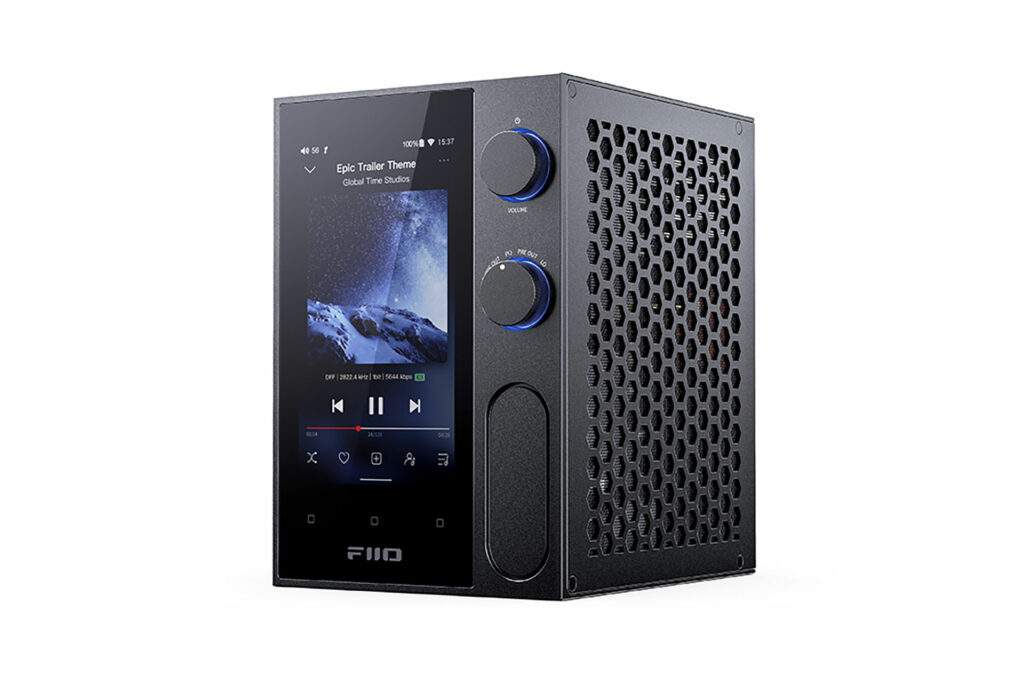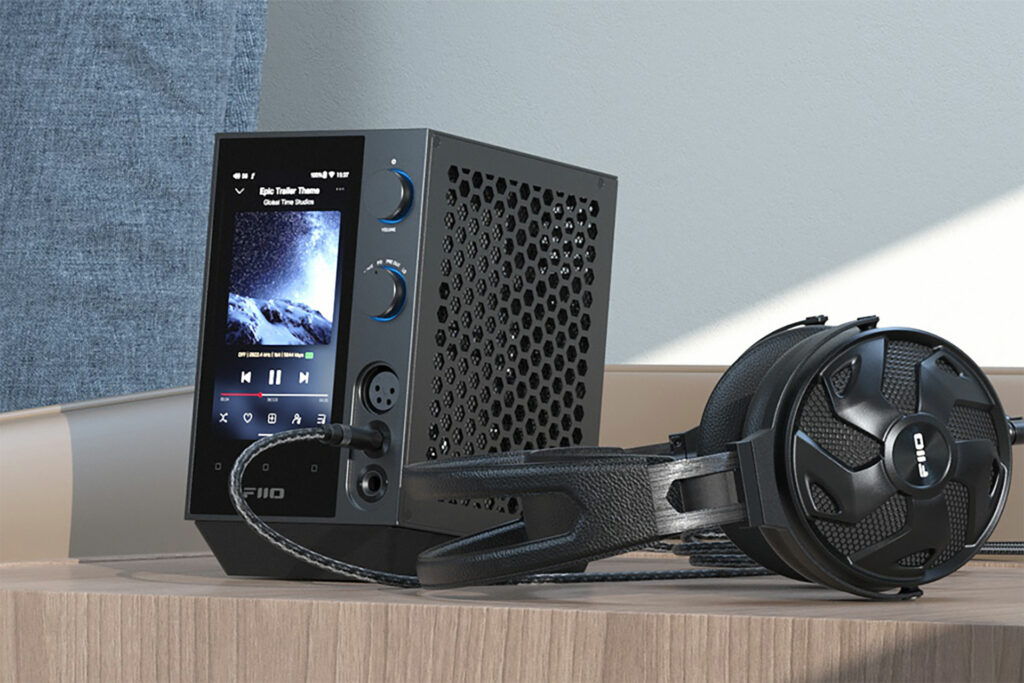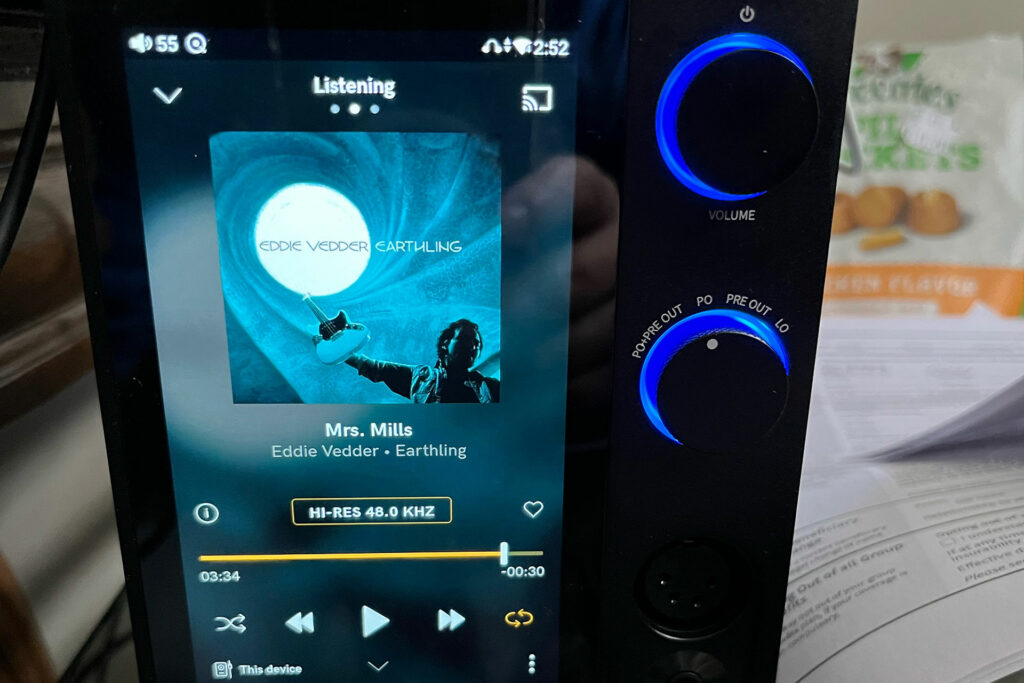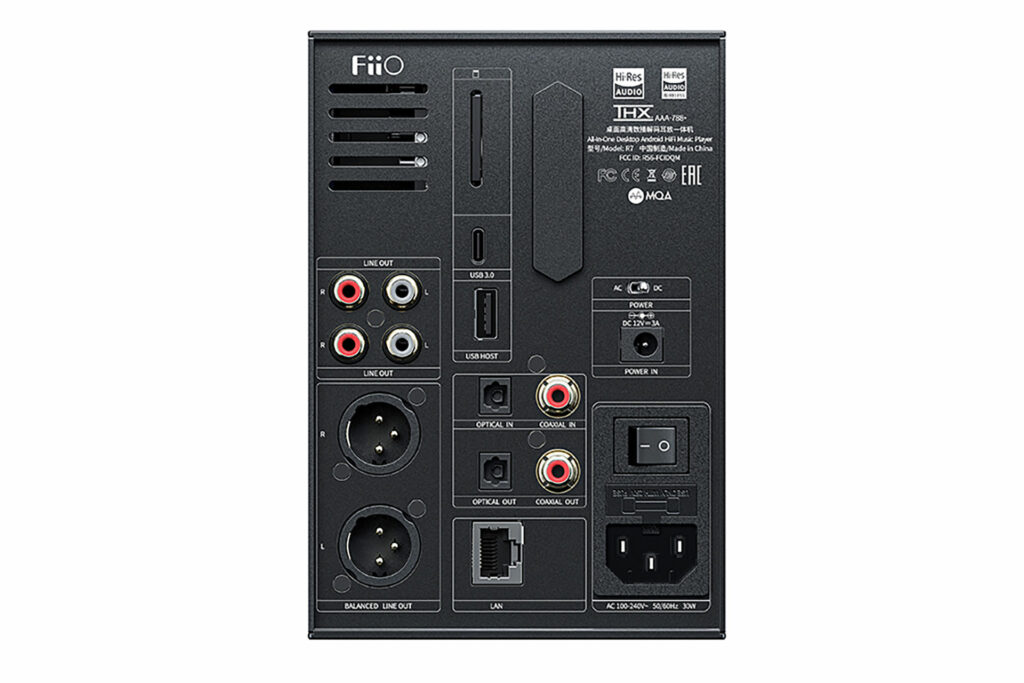Let’s start with the fact that FIIO is a Chinese company. I’m not sure I’m ready to call the R7 Chi-Fi, however. I’m not sure we have an Oxford definition of the term Chi-Fi, but to me that term is more reserved for the small form factor, sub-$200 piece of audiophile gear that you find that sounds better than you expect it to, based on its price tag. This audiophile preamplifier isn’t that.
This $699 preamplifier has a lot of things that on paper should make it a great value, and to be a fantastic audiophile starter piece, which perhaps might be a better definition for Chi-Fi. Then again, there are quite a few companies not from China delivering on said promise. The FIIO R7 not only serves as a preamplifier, with both unbalanced and balanced lineout, optical in and out, coaxial in and out, a ES9068AS DAC, a micro-SD slot, and supports Wi-Fi and Bluetooth, but it can also function as a THX AAA 788+ headphone amplifier, with 6.35-mm, 4.4-mm headphone output, and four pin XLR balanced headphone out. If that isn’t enough, it is also small enough to easily sit on your desk, and it has a five-inch touch screen on the front as well. That’s a lot of sizzle. Let’s see if there is some bacon behind these lofty specs and promises.

What Makes the FIIO R7 Preamplifier Special?
- While I call this a preamp, it does a lot more than you would expect out of your traditional stereo preamp. This unit has the capability to let you use only the front outputs if you are going to use it primarily as a headphone amplifier and streamer, or you can use just the rear output if you are going to use it as a straight preamp, or you can do both.
- The streamer allows you to experience all music services. Because the streaming portion of preamp is built on the Android operating system (OS), you have the option of using almost any music service, including the sometimes-rare Apple Music.
- The FIIO R7 has USB-C inputs, which will make Apple users breathe a sigh of relief. One of the most annoying things about trying to use your laptop, tablet or phone for music as an audiophile is that you always need to use the USB-B cable (the square connector that is typically used for printers in most non-audio applications). However, the FIIO R7 lets you use a USB-C cable, which is much more common. You are much more likely to already have one laying around your house, or to be able to go to most local stores and buy one.
- The FIOO R7 offers both balanced and unbalance outputs. Often, at this price point, you only get the unbalanced lineout options from a preamp, so seeing the balanced option available here is a nice get.

Why Should You Care About the FIIO R7 Preamplifier?
You should care about this preamp if, for example, you have a child in college who loves music, or you are someone who is just starting down their audio journey. With this component being so versatile, it becomes a fantastic way into the world of audiophile separates.
The other big feature that makes this stand out to me for people who are just getting started is that you can stream from pretty much any music service via almost any input method, so there isn’t really a barrier to entry when you’re looking to use a high-resolution streaming service.

Some Things You Might Not Like About the FIIO R7 Preamplifier
- To ensure that the FIIO R7 maximizes the number of services it can use (such as Apple Music which is hard to find on streamers), it uses a build around the Android OS. That in itself isn’t such a bad thing, if you’re an Android user, but if you have never used it before, it might take you some time to get used to the interface and where you change various settings. Others in the consumer electronics space use Android with good success. Relatively modern Sony television sets come to mind as an example of Android OS in the CE space.
- If you plan to use this audiophile preamp on your desk, you might find the size a bit awkward. With the device needing to be used in portrait mode, the height of the unit makes it problematic for me to fit on my desk, as I have two screens that use that space already. If it was built to be more horizontal, it would have fit under my screens and could be a fixture on more people’s desks, I’m sure.
- If you’re looking to use this as a preamplifier and are a lover of vinyl, there isn’t a phono stage. For many people, this won’t be that big of a deal, since if you want to add an audiophile-grade turntable to this unit, you can add an affordable external phono stage, or look for one of the many turntables today that have a phono preamp built in.
Listening to the FIIO R7 Preamplifier…
I started with a track called “Fallout Today” by Eddie Vedder (Hi-Res 48 kHz – Qobuz). This is from him 2022 studio album Earthling. This album features performances from many music luminaries, such as Elton John, Ringo Starr, and Stevie Wonder. One of the compelling things about Vedder’s music (particularly after 1996), whether it be a Pearl Jam track or something he has released as a solo artist, is that, to my ear, it can be hard to place in a time or era. Early Pearl Jam sounded particularly 1990s, but when I hear this track, there isn’t anything to me that says “This is from the 2020s.” “Fallout Today” sounds very clear and musical when listened to through the FIIO R7 in my reference audiophile system. All of the unique sounds that are produced by the various instruments always felt real, and it was easy to imagine the artists playing the music in front of me while I was listening through this preamp, both with headphones and with any number of speakers from Paradigm, PSB, Totem and MartinLogan in (and out of) my reference audiophile system.
The next track I used is “Horizons” by Pucifer (CD Quality – Qobuz). This track can be found on their album Conditions of My Parole. Pucifer is the more electronic of Maynard James Keenen’s projects. It also serves as being his most melodic, as you don’t have the big guitar sounds that you do with Tool or A Perfect Circle. When I listened to this track, through the quarter-inch headphone jack, using the HIFIMAN HE-R9 headphones I have, you get a real sense of space with the music. Each instrument has room to move and to breathe when you consider the overall imaging and instrument placement. This is on display at the start of the track as the acoustic guitar opens and then the bass drum kicks in. You hear the layering of each note from the guitar, the vocal, and then the piano as it comes in, along with the electronic sounds that all come together with enough space that it makes the song easy to digest. Some might say there is almost too much space between the instruments, but to me, it is about preference and what you like. Personally, I really like all of the space.
Does the FIIO R7 Preamplifier Have Any Resale Value?
This component, as well as the brand FIIO, is fairly new, thus it is hard to tell how much resale value this item will have five to 10 years into the future. With that said, the size and the flexibility this unit offers you should allow it to grow with you, or simply just move it to a different place in your home, whether that be your desk as a headphone amplifier, or with a television somewhere as a preamplifier, or even a streamer with another preamplifier. Moreover, it is hard to see how you can ever get hurt owning a $700 stereo preamp with many features.

Who Is the Competition For the FIIO R7 Preamplifier?
The Pro-Ject Pre Box S2 Digital preamplifier has USB, co-axial, and optical in, and an unbalanced out, as well as supporting a quarter-inch unbalanced headphone input. This is certainly a much smaller unit than the FIIO R7, but with that comes a lot less capacity as well.
If you’re looking to compare to a more traditional Chi-Fi unit, the Topping Pre90 ($599 – buy at Amazon) makes a lot of sense. Our own Steven Stone reviewed this preamp recently. He had nothing but good things to say about it, but it is a very simple unit with a display on the wrong (side?), and balanced and unbalanced input and outputs.
When I think about value Schiit is one of the first brands that comes to mind. The Schiit Kara ($699) fits that bill perfectly. It is the same price as the FIIO R7, and has a full range of balanced and unbalanced input and outputs, as well as headphone jacks on the front. It doesn’t have the streamer built in like the FIIO, or the digital inputs, either, but you know that you’re getting a solid product if it is coming from Schiit.
Final Thoughts on the FIIO R7 Preamplifier
The FIIO R7 is a bit of a unicorn in its space. I really struggled to find anything that was completely comparable to it at its price. The value you are getting here with the streaming functions, the digital inputs, the balanced and unbalanced outputs, and as a headphone amplifier, is amazing. I could likely I could go on and on with this, as there is so much audiophile value to be had here for a very fair asking price. There are some small complaints to be had with this unit, which you’re bound to have with almost anything, especially when you’re looking at units under $1,000, but they are relatively small.
I think this item can be among the best starting pieces for younger audiophiles that is on the market today. You can start it with any set of headphones, and let it grow with you to use as a preamplifier, and I could certainly see this being a piece that someone has for many years after they have left their dorm room, all while sounding great. When I think about value in the audiophile space, the FIIO R7 checks every box and then some, due to its versatility. There are just so many different ways you can use this device, and if FIIO provides regular updates to their flavor of Android, this is a piece of gear that could easily still be in use by an audiophile 20 years after they buy it.




I suspect that the users who aren’t into headphones would find this a useful center of a desktop system with powered speakers. Because it would have to sit behind a monitor on many home desks, it may not be easy to reach so you can turn down the volume if a spouse wants to converse or a call comes in. A remote would make this more manageable in that setting. Does this come with one?
We didn’t miss it overall.
They wouldn’t send us one but we’ve actually got TWO off them in hand RIGHT THIS SECOND. We’ve got the A6 and the special edition A6 – not the higher end A8.
Review pending later in the year. Greg Handy liked the larger/standard form factor. He didn’t hear the WOW performance in terms of sonics over say a Bluesound Node in a volume-matched, direct comparison. More on that when the review goes live.
That’s the best comparable right now I think.
Fiio form factor makes a lot of sense with the interface. Apps are built for portrait mode presentation, it’s what most users are used to. Landscape often doesn’t look right with a lot of unused screen area. Also they have bypassed the internal Android DAC so you’re getting better quality output.
I think you missed the main competition for this – the Eversolo streamer/DAC. Lots on online buzz, decent performance for the money..